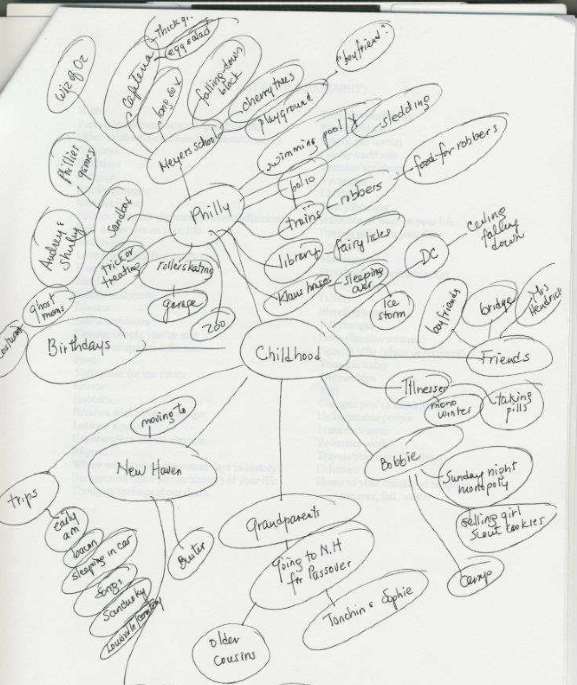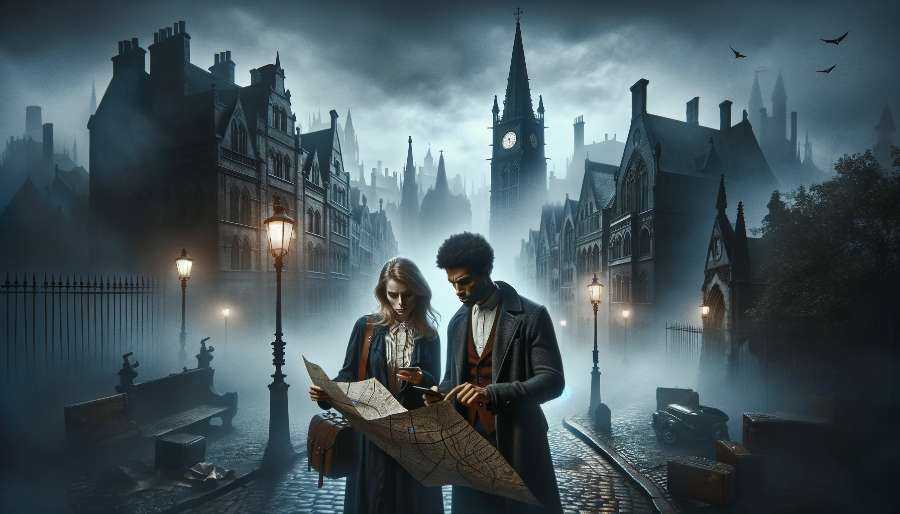How to Make a Novel Outline
A novel outline is a plan for a novel. If you're outlining for yourself and not for an editor, then the good news is there's no right or wrong approach. You can type up your outline with Roman numerals, or you can paint it on the carpet in lipstick if that works for you. Every author has their own system.
Skip to topic
Why outline a novel?
A simple outlining technique
Other tools for planning a novel
Tips for your novel outline
Using an outline
Templates and worksheets
Why outline a novel?

One of the great things about a novel outline is that it lets you test ideas before you commit to them. It lets make sure your novel will work BEFORE you start writing.
Sometimes, you'll discover that your novel idea isn't going to work. For example:
- Your idea might not translate into enough scenes to fill a novel (though it might have potential for a short story).
- You might not have a strong enough story conflict, so the action ends up feeling flat.
- There might not be enough of a central thread tying things together. Your scenes feel like a series of episodes, not like a story.
If you discover one of these problems, you can either find a way to fix it, or move on to the next idea. Either way, figuring it out ahead of time can save you a lot of time and heartache.
Other benefits of a novel outline:
- It can make it less intimidating to start writing.
- You have a roadmap as you're writing your novel. You know what you have to write next.
- You can avoid writing yourself into a dead end. You can solve story problems before you've wasted a lot of time writing scenes that you would only change or cut later.
- You can set up your ending because you know what is coming. You can prepare the reader for scenes that are coming later in the book. For certain kinds of novels such as mysteries, some kind of outline or plan is almost necessary because there are many small details that have to fit together at the end.
There are authors who never outline at all. They just sit down and write. But then they usually rewrite the whole book again afterwards. Instead of planning their novels, they prefer to write a lot of drafts, discovering new aspects of the story each time.
This is a fine approach, but keep in mind that the less planning you put in ahead of time, the more rewriting you will likely need to do.
Outlining a novel in 5 steps

Here's an easy approach you can try. (Remember, there's no RIGHT way to make a novel outline—this is just one option!)
1. Brainstorm.
Before you start your actual novel outline, spend some time brainstorming freely, letting your imagination run, generating ideas and writing them down. Carry a notebook around with you.
2. Answer some questions...
When you feel that you're getting ready to move beyond the brainstorming phase, then write down answers to these questions:
- Who will be your main character? Write some information about them. (It's possible to have more than one main character, but this will make your novel more complicated to write. If you plan to have several main characters, write information about each one.)
- Normally, your novel will be about an important problem that your main character has to solve, or an important goal that they want to achieve. What is this problem or goal? Write it down. Why is it the most important thing in the world to your character right now? (If it isn't that important to your character, look for another problem or goal to give them. If your character doesn't care a lot about resolving their problem, your readers won't either.)
- What terrible difficulties are there between the character and their goal or the solution to their problem? (If it's too easy for your character to get out of trouble or get what they wants, then there will be less of a story). Make a list of difficulties.
- Where and when (in general) will your story take place? In Miami in the early 1980's? On the planet Fiz in the year 3000?
- In general, what genre or type of novel are you writing? Is it mainly comedy? Drama? A thriller? Read more about types of novels here.
- Write a summary in 1-2 sentences of your novel's main idea. You can imagine that you're writing the blurb for the book jacket. This summary should include a character or characters and an important problem or goal. If you find that you can't pin your novel down to just 1-2 sentences, then your idea probably isn't focused enough yet, and you should keep working on it.
- What are the main events that will move your character toward (or away from) solving the novel's central problem or achieving the central goal? Make a list.
3. Come up with scene ideas.

For each of the main events in the list you've just made, imagine a scene or scenes. Think about:
- What characters are in the scene?
- Who is the viewpoint character (the character through whose eyes the readers will see the scene)?
- Where does the scene happen?
- What happens?
- What does the scene accomplish in the novel? Does it move the character forward toward their objective or further away from it?
Every scene should have a purpose. It should either move the character forward or backward toward or away from their goal or solving the novel's central problem (novels are more exciting if you play with the reader’s emotions by moving the character back and forth a bit), or else it should deepen the reader's understanding of the characters or situation in the novel.
Make a list of scene ideas, summarizing each one in just a few words. For example:
- Maria argues with her parents about going to Dana's party.
- Aliens abduct everyone at Dana's party and take over her house.
- That night, Maria sneaks out of her bedroom and heads to the party.
4. Check if your plot's focused enough.

Write a one-sentence summary of novel's main plot idea. You can imagine that you're writing the blurb for the book jacket. This summary should include a character or characters and an important problem or goal. If you find that you can't boil down the plot to a single sentence, then your idea probably isn't focused enough yet, and you should keep working on it.
Examples:
- Boy learns he is actually a wizard and is sent to a wizarding school, where he has to battle the most evil dark wizard of all time.
- Detective has to solve a series of brutal murders in a convent.
- Woman discovers that her husband has a second family and has to choose whether to leave him.
(Tip: Save this 1-sentence – can use be helpful later when it comes time to pitch your novel to agents and editors!)
5. Organize your scene ideas.

Look at the scene ideas you planned in Step 3. Are they in the right order? What other scenes are needed to tell the story of your character's battle with the problem or their work toward the goal? Fill in the missing pieces. Take out any scenes that don't belong.
Put everything into the best order for telling the story. This is your novel outline! Use it to help you, but don't hesitate to keep changing and improving it as you write. The story might take you in unexpected directions, so stay open to surprises!
Other tools for planning a novel
Index cards
You can write each scene idea on a separate index card. Then play around with the order, adding new cards and removing cards that don't belong.
Once you've got a sequence you're happy with, take a photo of the cards arranged in order, and/or number the cards to save your work. If you have enough space, you might like to pin the cards to a cork board or tape them to the wall for easy reference you're working.
Idea maps
Mind-mapping is a great brainstorming technique, especially at the early stages of planning a novel. Here's an example of a mind map.

There's no right or wrong way to make mind map. One approach is to write a word in the center of a page, then surround it by words and phrases that are related to it. Use lines to show how ideas are connected. You can use colors and pictures to add dimension to your visual map.
Charts and graphs
Some authors create timelines and charts of their plots, or specific plot elements. For example, here's a hand-drawn graph J.K. Rowling used for one of her novels.
Character profiles
Many writers create profiles of the main characters they're going to write about. They take notes on a character's physical appearance and personal history, their good and bad qualities, likes and dislikes, habits, interests, hopes and fears.
Click here for a questionnaire you can use to make character profiles.
Pictures
You can collect pictures to help you imagine the people and places you will be writing about. You can go through magazines and do a "casting" for your characters. You can create a scrapbook if you like. Or you can search for pictures online (for example, doing image searches on Flickr.com and Google), then use Pinterest.com to create a virtual scrapbook. You can also draw your own pictures. J.K. Rowling drew sketches of the characters in her Harry Potter novels. Many writers draw maps and floorplans of the places they'll be writing about.
Writer's journal
Many writers like to keep a notebook where they write down ideas, descriptive details, scraps of dialogue, etc., as they come to mind.
Novel-writing software
There are many software options with tools for outlining your novel and mapping different aspects of your story such as timelines, character relationships, subplots, etc. One advantage of using software is it makes it easy to keep all of your planning in one place and to search for what you need.
Tips for outlining a novel

- Know yourself, and figure out the method that works best for you.
- Don't waste time choosing the perfect words for your outline or color-coding your note cards in seventy-two colors. The outline is just for you. What the reader cares about is the novel, so put the loving attention there instead.
- HAVE FUN! Ultimately, outlining a novel is a process of experimentation. Sometimes it can feel like putting together a jigsaw puzzle. At other times, it's like a structured form of daydreaming.
- Don't become a prisoner of your outline. I know one author who spent a whole year trying to get from Chapter 6 to Chapter 7 of her book because the outline said a certain event was supposed to happen. And she couldn't find a way to make it work. In the end, she removed this event from her outline, and the problem was solved.
Using a novel outline
Not all novelists like to outline. It's not a requirement. But an outline gives you security.
You never have to wonder what to write. You don't have to worry about running out of ideas.
And once you have a solid outline, the writing will normally go faster and more easily.
When you sit down to write, you can take the next plot point on your outline and let your imagination run with it, daydreaming the scene, playing it in your mind like a movie. Then write down what you see and hear, what the characters say, what everything looks and sounds and smells like.
As you do that, new ideas will occur to you, ideas that weren't in your original outline. That's great! Explore them! You're not locked in to the outline. It's just there in case you need it.
That's important to remember: the outline is NOT a limitation. You can always add things that aren't in the outline (or ignore things that are).
Imagine a path through the wilderness. As you're crossing that wilderness, you might wander off the path wade in a stream or pick berries that are growing nearby. But as long as you keep the path in sight, you always know where you're headed.

Templates and worksheets
Click here to get the Novel Outline Summary Worksheet.
Click here to get the Character Outline Worksheet.
Click here to get the Scene Outline Worksheet.
Enter your email below to get free plot templates for different types of novels.
How to Outline a Novel - Next Steps

Join our free email group to get writing ideas and tips sent to your inbox! You might also enjoy...